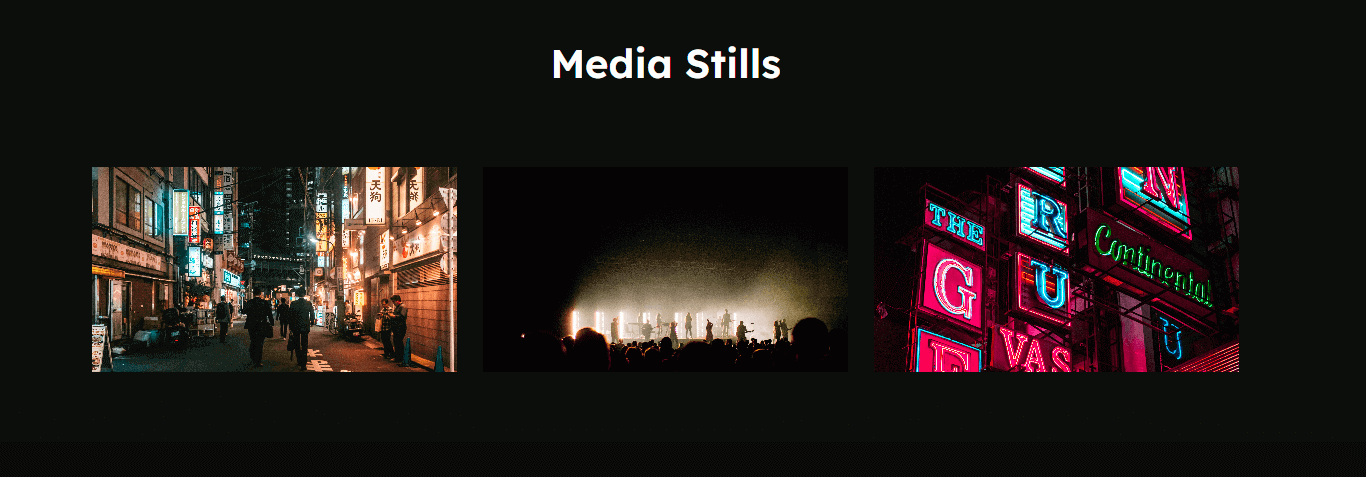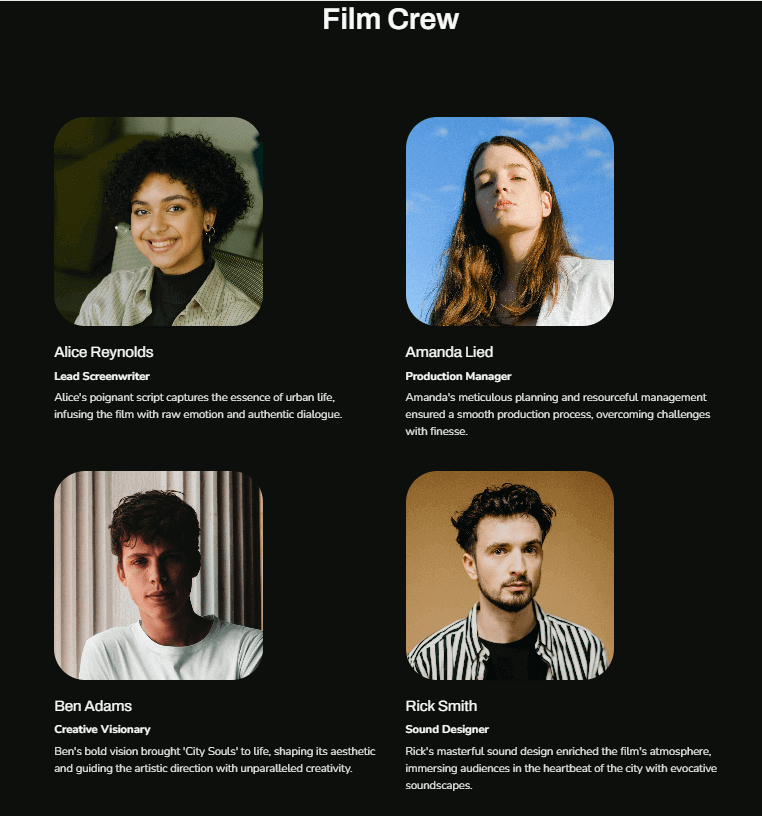Make a Film Press Kit that Stands Out (Guide + Examples)
Learn how to make a film EPK that makes your film stand out. See movie press kit examples and use them as templates to create your best film media kit yet.


Learn how to make a film EPK that makes your film stand out. See movie press kit examples and use them as templates to create your best film media kit yet.
Short answer
Title slide
Film synopsis
Bios of key contributors
High-quality stills
Behind-the-scenes photos
Fact sheet
Director’s statement
Official trailer
Press reviews and quotes
Contact information
Next steps (Call to Action)
If you want to learn more, keep reading for a full breakdown of how to create a film EPK slide by slide.
1) The cast reenacting key scenes
After shooting, get the actors to briefly hold their positions so you can rearrange them for the perfect shot. This way, you avoid any background noise from the shoot and get clean, clear images.
2) Behind-the-scenes action
Take pictures that show off the energy and expertise on set. Whether it’s makeup going on or a tricky scene coming together, these photos really highlight what it takes to make a movie.
3) Your role as a producer
Instead of typical photos of you sitting back with a script, aim for something more dynamic. Here's a cool trick: Take a page from stage actors who really know how to make their presence felt by pointing at something interesting. This gives a more personal and involved image of your role in the filmmaking process.
4) Photos with celebrities
If you can, bring a local celebrity to the set and take some photos together. This adds glamor and shows industry support for your project. Remember to position yourself so that your name appears first in photo captions, which usually read left to right.
Entertainment journalists: Share your press kit with movie reviewers and entertainment writers. Choose those who are into the kinds of stories or genres that your film explores. They can really help spread the word to the right people.
Festival teams: Always include your press kit when you submit your film to festivals. It gives the organizers a better sense of your film and helps them figure out how it might fit into their event.
Broadcast outlets: Reach out to TV and radio stations that cover films and entertainment. Having your film mentioned or reviewed on these platforms can really boost its profile.
Social media influencers: Connect with influencers who have a strong following online and engage audiences who would be interested in your film’s themes. Their support can really spread the word quickly.
Industry insiders: Share your press kit with distributors and production companies who might help get your film out to a wider audience. A good partnership here can mean more people seeing your film.
Local press: Don’t forget to contact local newspapers and broadcasters, especially if your film has ties to the area or was filmed nearby. Local media often jump at the chance to feature local talent and stories.
Film critic associations: Reach out to film critic groups. Their reviews can lend your film more credibility and bring in more viewers.
Increase visibility: A press kit makes it easier for journalists, festivals, and audiences to learn about your film, boosting its chances of getting noticed.
Show professionalism: A well-prepared press kit shows you’re serious about your project, which can influence how industry insiders view your work.
Make promotion easier: With all promotional materials in one place, marketing your film becomes much simpler for you and potential promoters.
Attract distributors: Distributors often look for complete, polished presentations of a film; a film media kit provides exactly that, making your film a more attractive candidate for distribution.
Help media coverage: By supplying key information and assets, a press kit makes it easier for media outlets to write reviews or feature stories about your film.
Start building your Electronic Press Kit (EPK) as soon as production kicks off.
Think of it as the highlight reel for your film. Capture those perfect behind-the-scenes shots, and those standout interviews with your cast and crew.
Kicking things off early helps you gather all this cool content before everyone moves on to their next projects after filming ends.
Stop losing opportunities to ineffective presentations.
Your new amazing deck is one click away!












